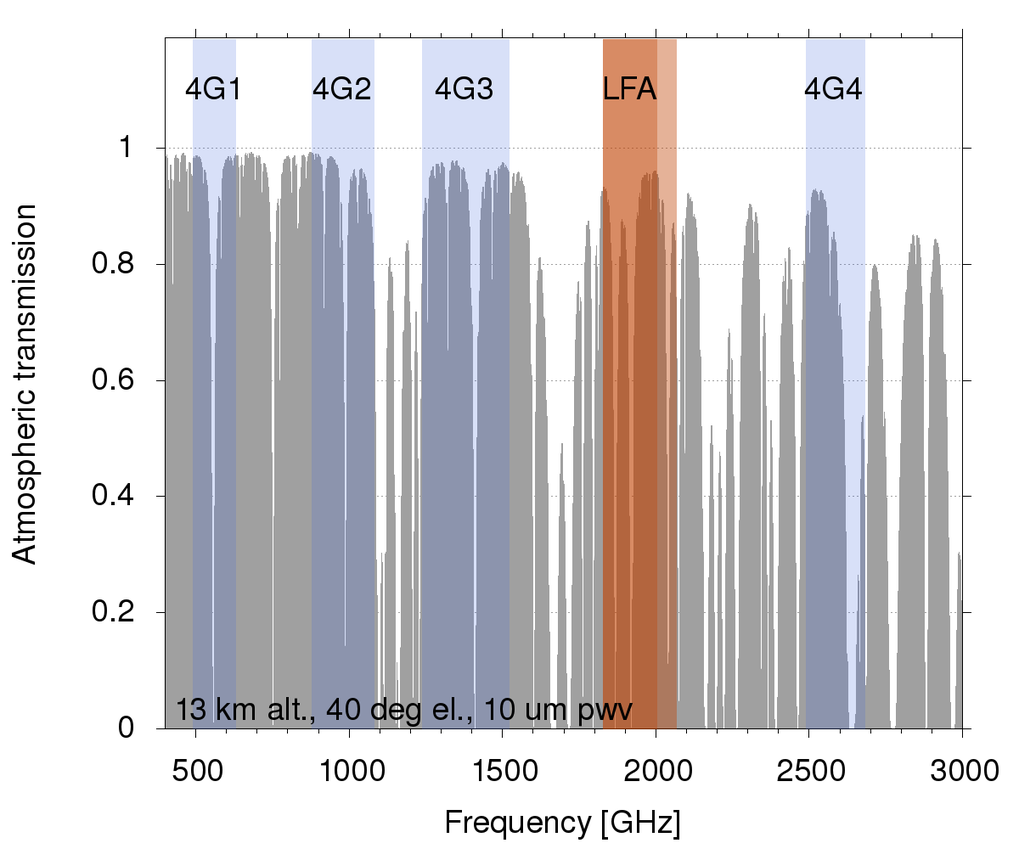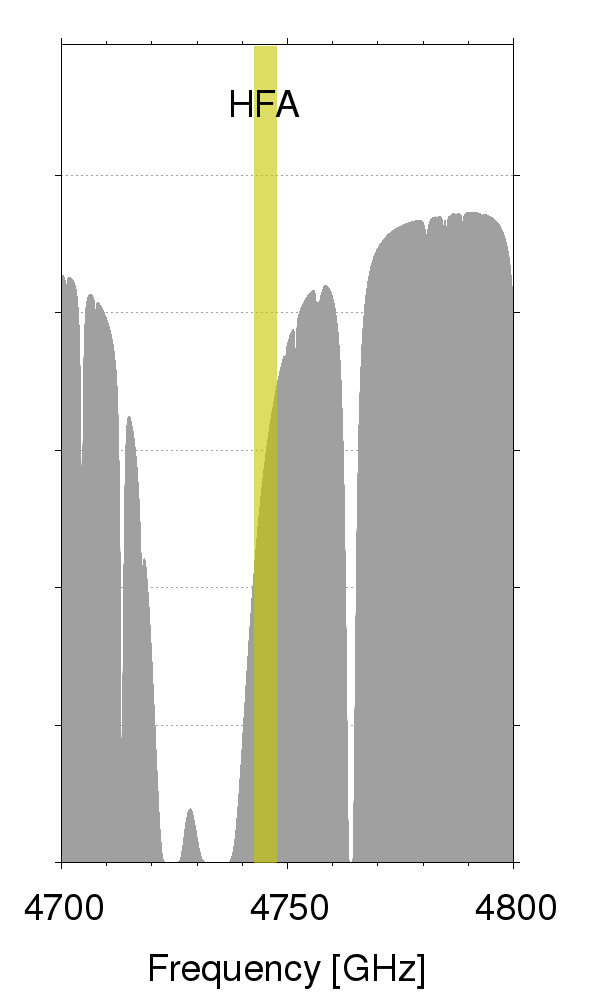GREAT – Fact Sheet
GREAT is a highly modular platform. Two GREAT-channels - a GREAT-channel consists of a cryostat, local oscillators (LO), and optics - can be mounted on the main structure simultaneously.
Currently, three GREAT-channels are available which can be combined in two configurations (see sections below).
Available GREAT-channels and valid combinations of channels
Quick overview of GREAT-channels
|
Channel name |
LFA |
HFA |
4GREAT |
|
RF coverage |
1.83 – 2.07 THz |
4.744 THz (± 100km/s) |
492 – 627 GHz (4G-1) 893 – 1073 GHz (4G-2) 1.24 – 1.52 THz (4G-3) 2.49 – 2.69 THz (4G-4) |
|
IF coverage |
0.5 – 4.0 GHz |
0.5 – 4.0 GHz |
4 – 8 GHz |
|
Receiver type / number of pixels |
Medium-sized array 14 (2 x 7) |
Medium-sized array 7 |
4 single-pixels co-aligned on sky |
|
Average Trec |
~ 1000 K (DSB) |
~ 1300 K (DSB) |
~ 140 K (DSB) (4G-1) ~ 360 K (DBS) (4G-2) ~ 1000 K (DSB) (4G-3) ~ 2500 K (DBS) (4G-4) |
|
Beam width on sky (HPFW) |
14.1’’ |
6.3’’ |
52’’ (4G-1) 27’’ (4G-2) 20’’ (4G-3) 10.5‘‘ (4G-4) |
|
Mixer technology and manufacturer |
Waveguide-based HEB NbN on Si membrane, KOSMA |
Waveguide-based HEB NbN on Si membrane, KOSMA |
Waveguide-based HEB ???, LERMA (4G-1) ???, SRON (4G-2) NbTiN, KOSMA (4G-3) NbN, KOSMA (4G-4) |
|
LO technology |
Solid-state chain |
Quantum-cascade laser |
Solid-state chain |
|
LO coupling |
Beamsplitter (wire grid) |
Beamsplitter (wire grid) |
Beamsplitter (wire grid) (4G-1, -2, -3) Diplexer (4G-4) |
Installation combinations of these three channels are: HFA-LFA, and HFA-4GREAT.
LFA and 4GREAT cannot be operated in parallel, because dichroic filters with adequate reflection and transmission coefficients to split the LFA and 4GREAT frequency bands are not available.
Further information about the LFA and HFA can be found in [1] and [2], or visit the upGREAT webpages.
Details about 4GREAT are presented on the 4GREAT webpages. A paper describing the system is in preparation [3].
Atmospheric Transmissiona and RF Coverage


Backends
GREAT uses (the latest version of) Fast-Fourier-Transform spectrometers, developed at our institute (see the webpages of the Digital Signal Processing division for details).
They offer an instantaneous bandwidth of 0-4 GHz which can be sampled with up to 64k channels. Usually, the boards are programmed to 16k channels to reduce the data rates for fast-dumping observation modes. A channel bandwidth of 244 kHz (4GHz/16k), corresponding to a velocity resolution of 0.15 km/s at 492 GHz (the lowest frequency of 4G-1) and 0.015 km/s at 4.744 THz (HFA), meets all our science requirements.
References
-
Risacher et al., A&A 2016
-
Risacher et al., JAI 2018
-
Duran et al., in prep.